QNAP QuTS Hero Software
The QNAP TVS-h1288X we are testing utilizes the QuTS hero software stack. This solution combines the ease-of-use and many of the higher-level management features of QNAP’s traditional offering but adds ZFS as the back-end storage. For those who want that emphasis on ease of use, but also want ZFS underneath, QuTS hero is the company’s answer. We are going to have a number of screenshots showing off a bit of the features and functionality. There is frankly too much to go over in this review.
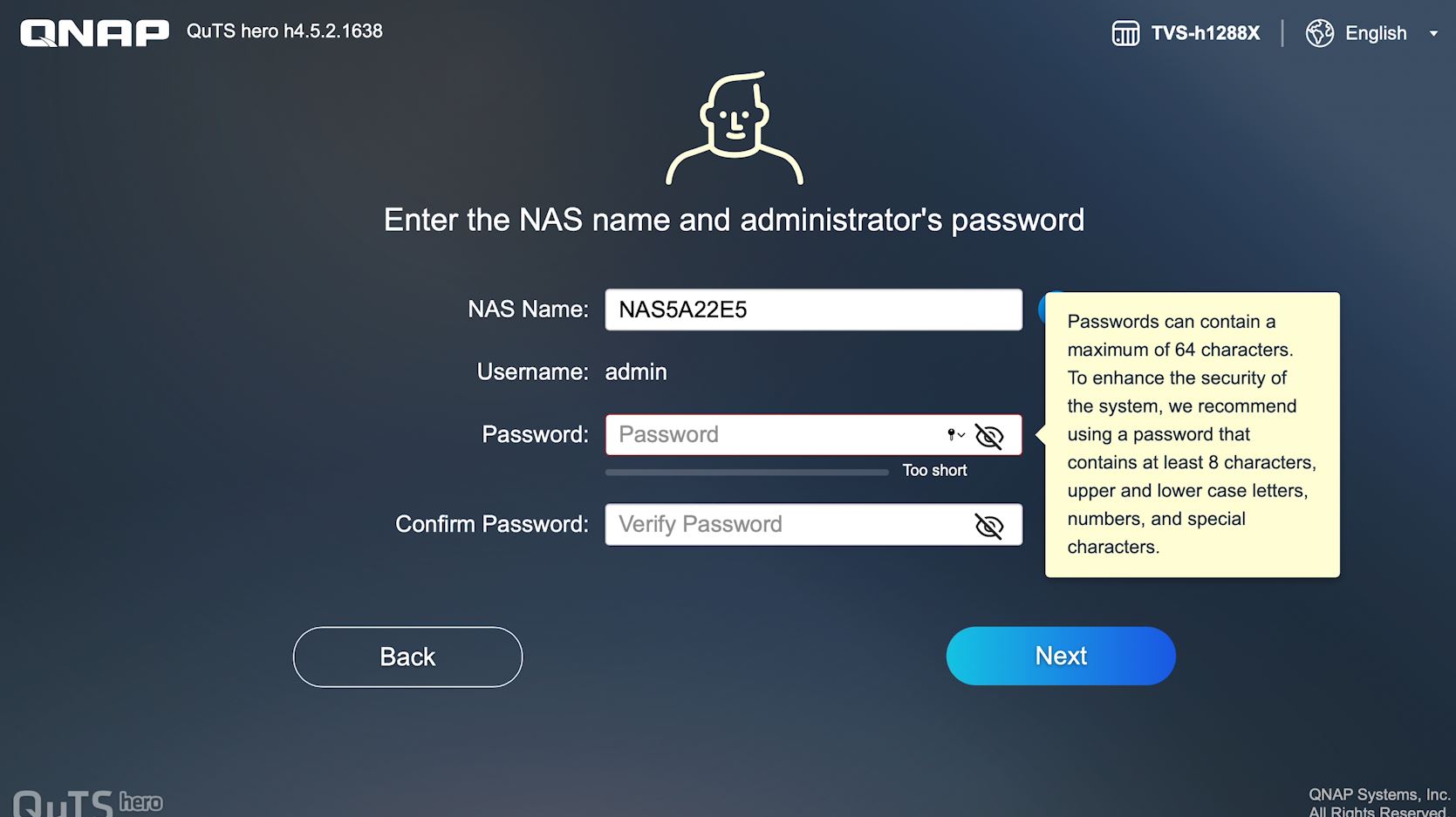
QNAP also has a nice feature where it can show the health status and location of a disk. If a disk fails, the TVS-h1288X can pinpoint which node and where it is in the chassis. These chassis management features are a great touch. Often if one uses open-source software to build their own ZFS NAS, this is the type of feature that often takes extra effort to set up. As a result, some other ZFS NAS solutions are not as clear on which drive failed which does not seem like an issue during setup but can be a big issue during future service. This is a great feature.
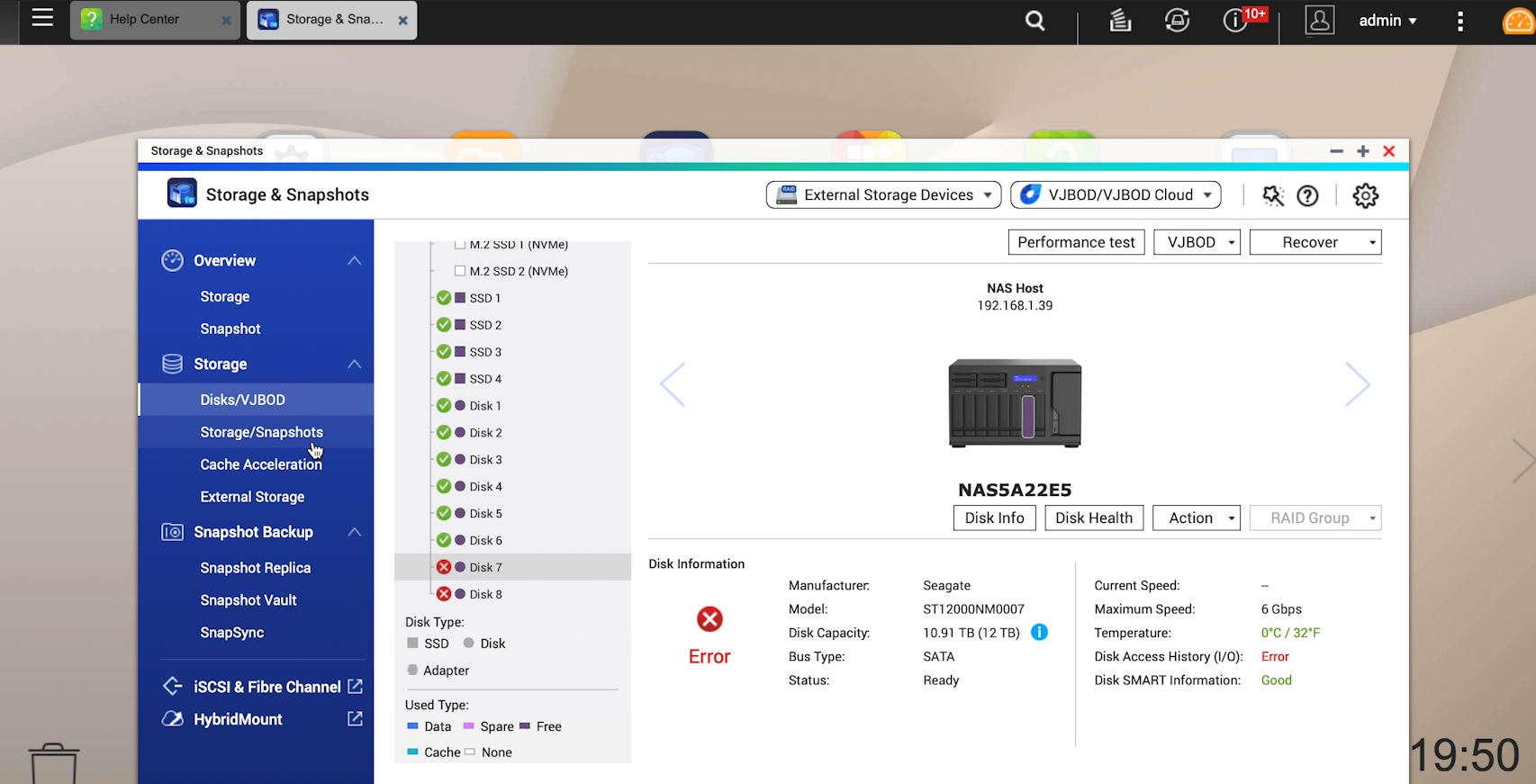
As we mentioned earlier, this information is tied into the various screens and locations are shown in the web interface.
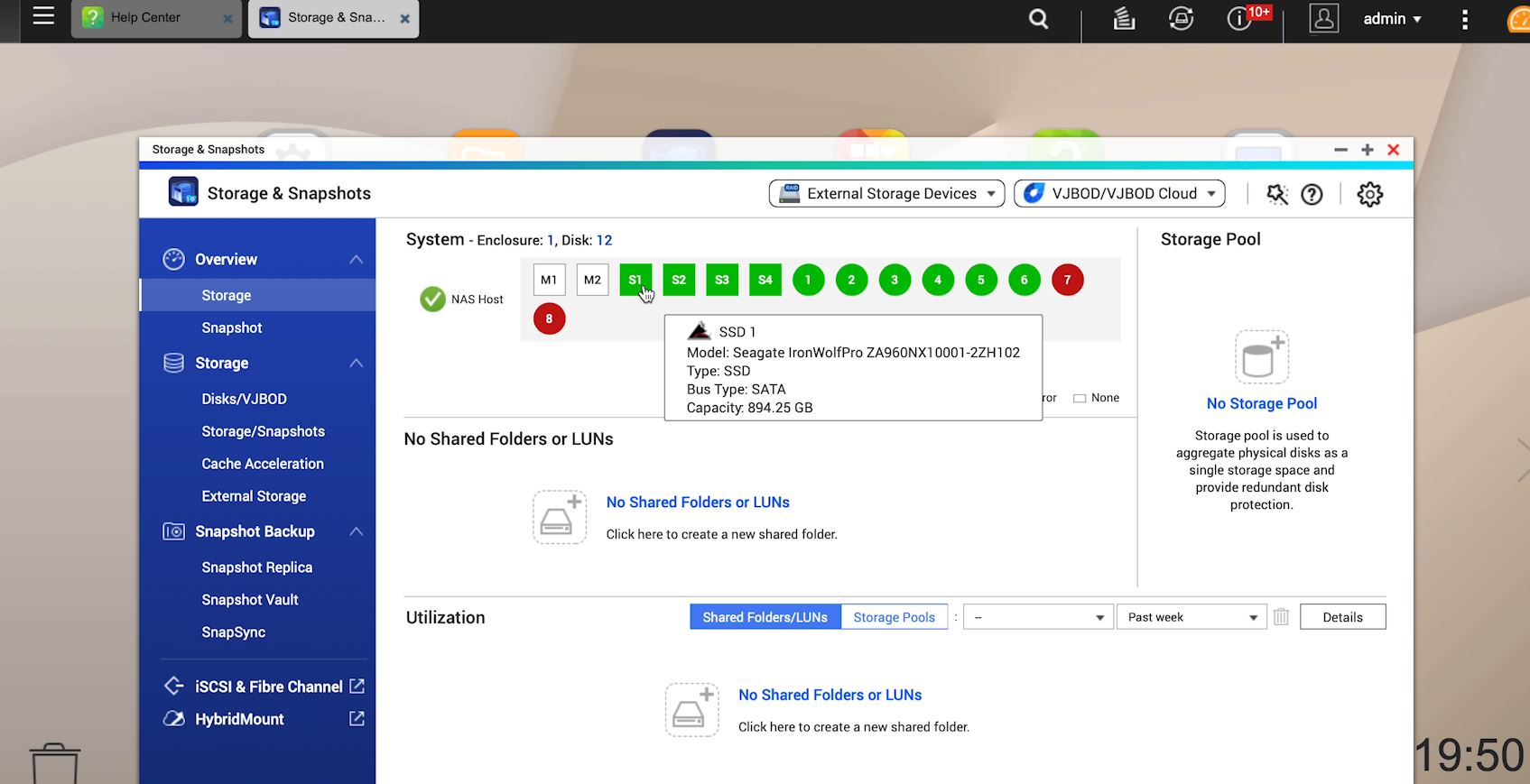
We also showed earlier that we have a LCD screen for error messages and the same green/ red status in the software dashboard is mirrored on the front of the system. It may seem like a small step, but this is perhaps the easiest system to see which drive has failed that we have ever used.
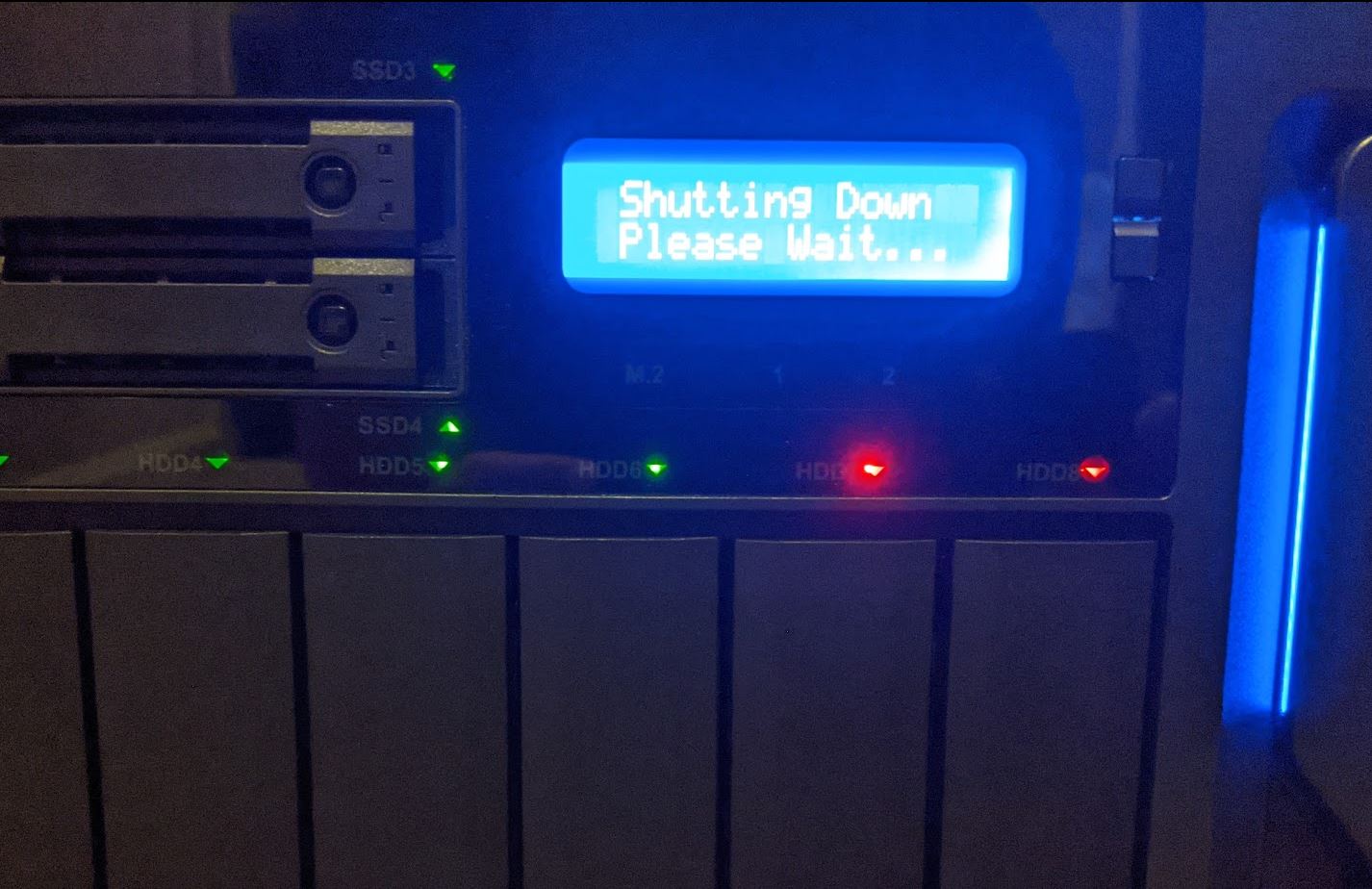
Along with the storage, QNAP can also get system inventory information based on the NAS unit which we would expect. Perhaps the other nice bit of customization we saw is that the network ports are shown with status and location based on where they are in the overall chassis. QNAP went beyond disks with this functionality.
Creating a storage pool is relatively easy in QuTS hero. One can simply select disks and have the Create Storage Pool Wizard and have QNAP’s software configure everything for you. QNAP offers a lot of different options, but one does not need to delve into them. As a quick aside, just as an example of how abstracted the actual functionality of ZFS is to the experience, we did not see ZFS mentioned on this creation wizard.
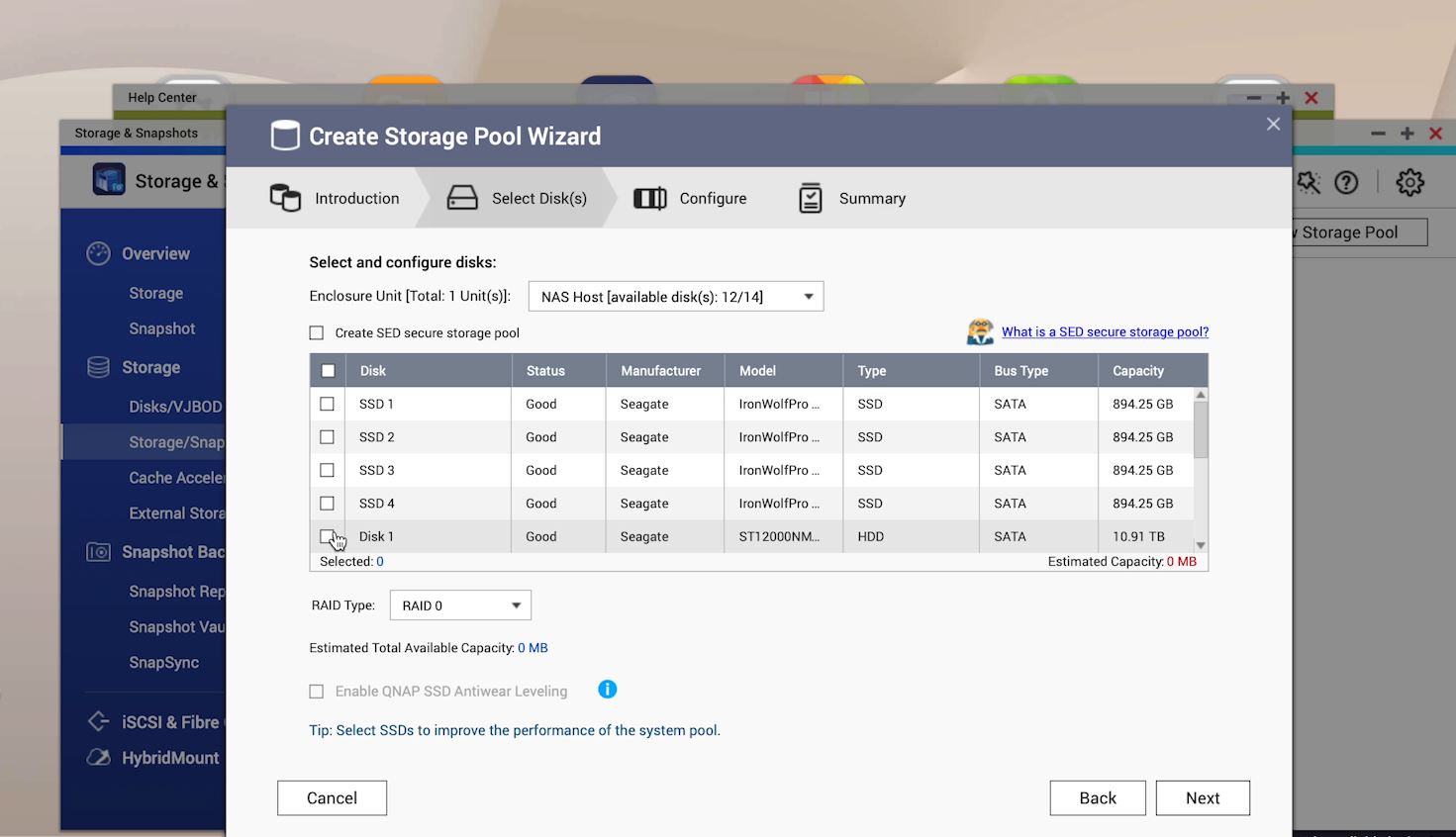
The only area we saw ZFS mentioned was adding a SSD cache there is a “ZIL” reference which is the ZFS intent log. At STH, we have a guide on What is the ZFS ZIL SLOG and what makes a good one. That was the biggest hint that we were using ZFS aside from the fact that we skipped the volume creation workflow.
QNAP even has an easy UI to adjust how the SSD cache is used and allows one to pick data sets that it should be used on. One can also over-provision arrays and create reserved space for ZFS snapshots. Something one can see in these screenshots is that QuTS hero automatically is creating these different share locations without our intervention. Again, this is a higher level of automation to make the user experience easier.
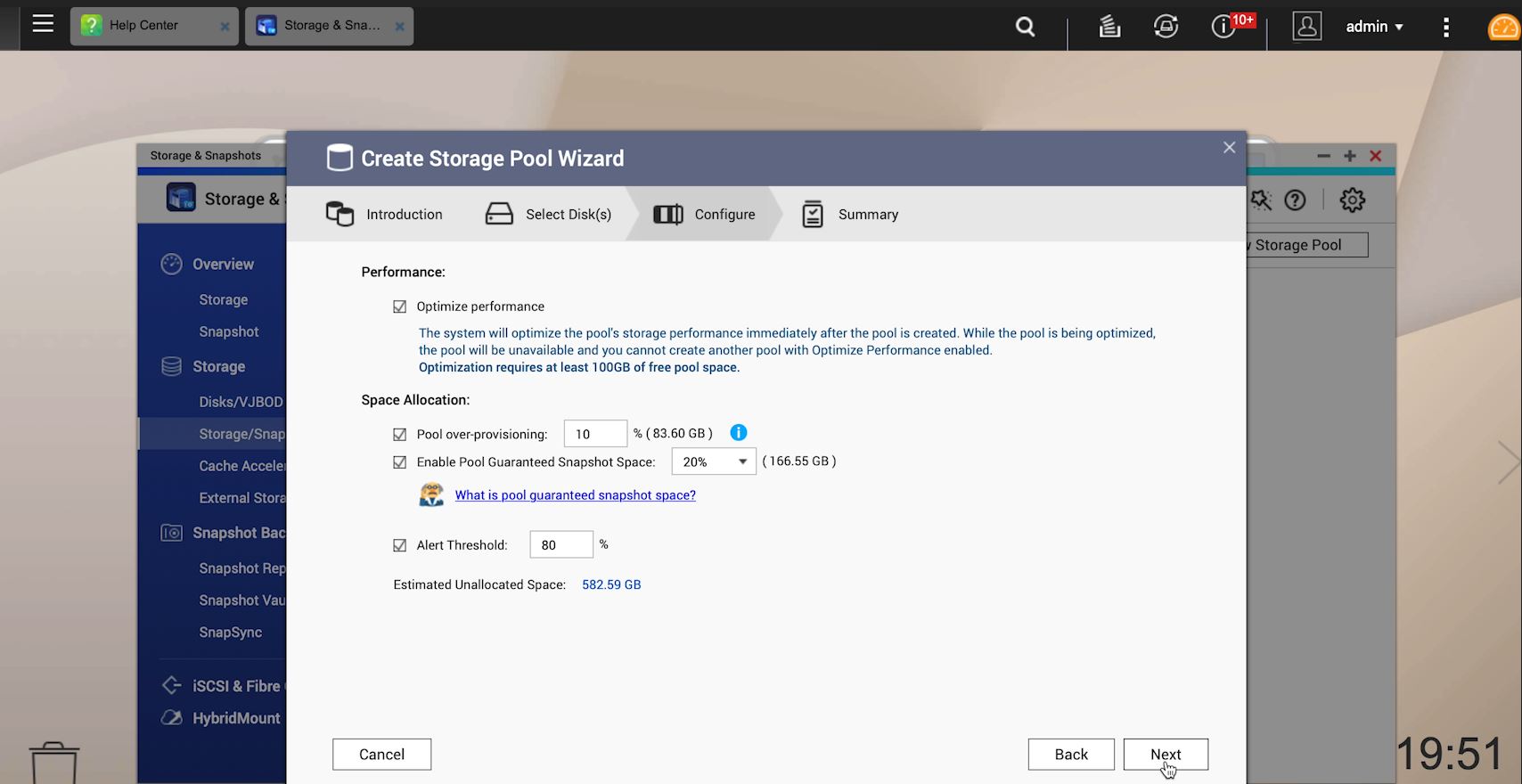
One of the really interesting parts of the solution is that by default, QNAP enables compression. One can optionally enable deduplication on data sets as well. This is ZFS functionality that is added with little fanfare, just a simple switch.
QNAP has an extensive set of software solutions. This includes a large selection of apps in the App Center. For admins who just need a simple click-to-install experience, this is a great option.
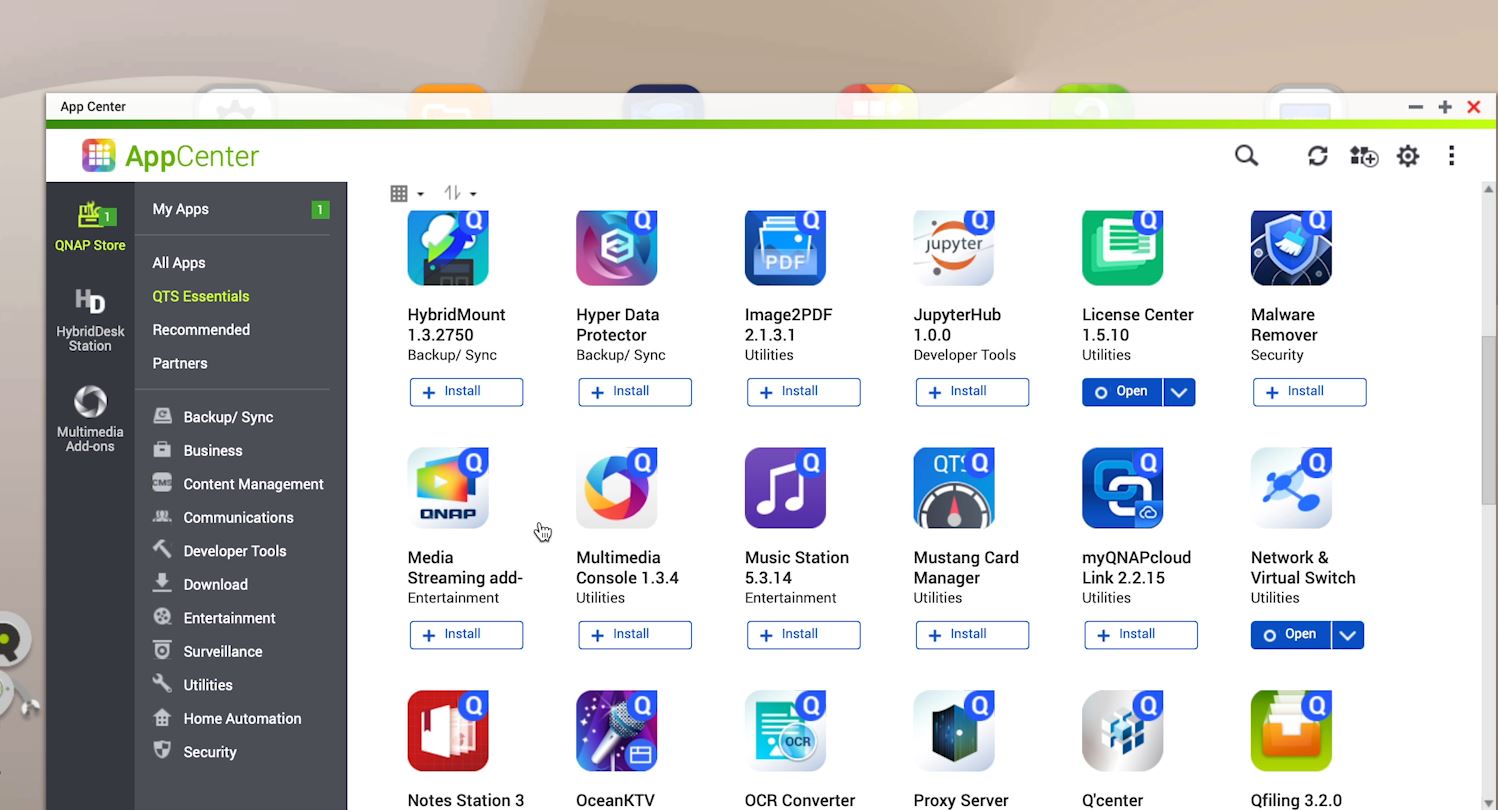
While one can host applications, VMs, and containers locally, the solution can also be used to connect to other virtualization hosts. QNAP has step-by-step guides for doing this work as well.
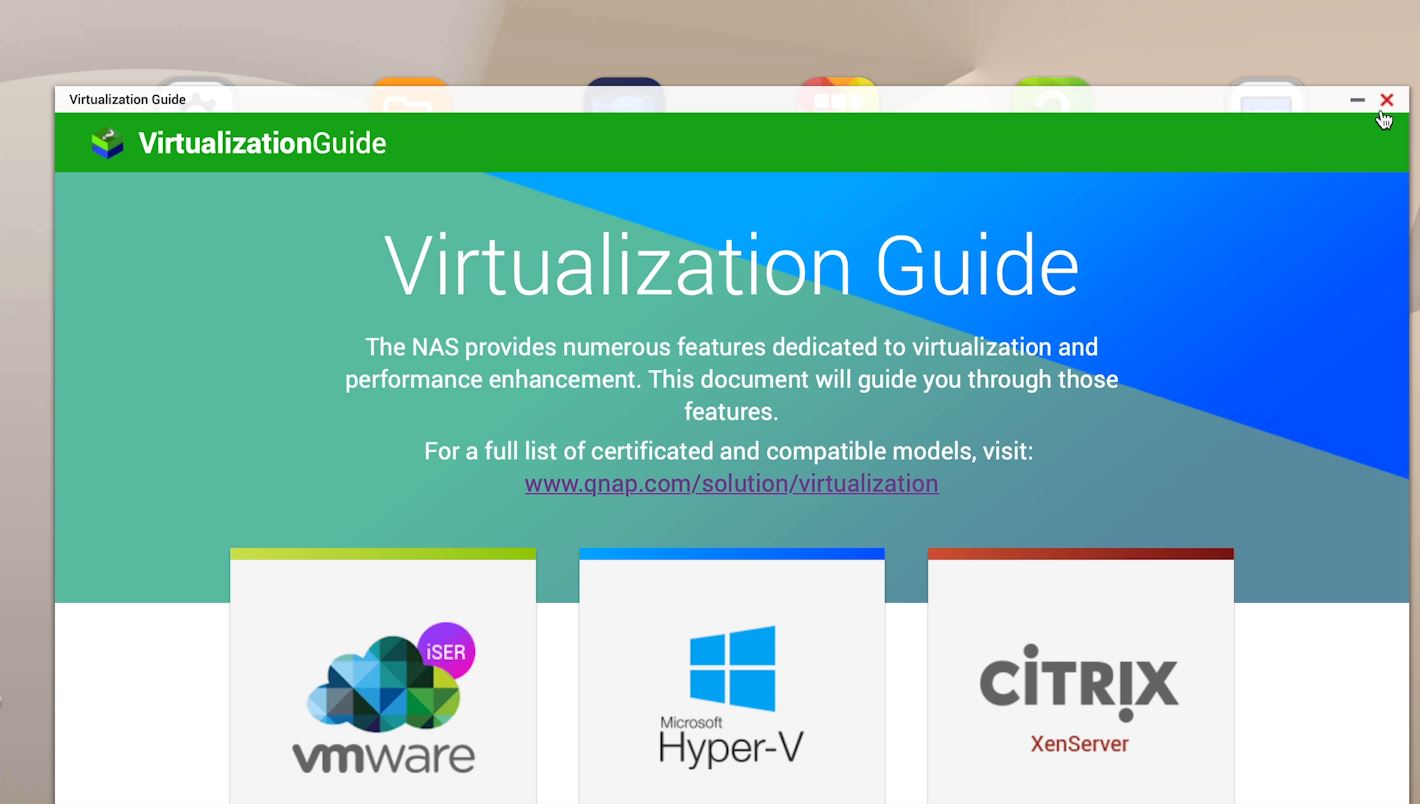
Overall, the key here is that QNAP is focused on building an extremely easy-to-manage solution even if one has little experience with storage management. All of this functionality does mean that there are additional security surfaces to secure which goes along with having that extra functionality. Still, this is a significantly easier experience for a novice admin or one that does not administer a QNAP NAS daily to work with since there are wizards, suggestions, and well-explained tool tips throughout the web GUI.
Next, we are going to discuss performance, power consumption, and noise before moving to our final words.




I have the 9 bay TS-h973AX AMD Ryzen NAS, running QuTS Hero. My first QNAP NAS after a couple of Synology. I specifically bought it for the mix of ZFS NAS dedup and compression with the nice addition of the app ecosystem. Mine stores multiple, very similar linux VDI VMs on an iSCSI connected datastore and is achieving impressive data storage reductions, and I am really happy with the storage performance across the inbuilt 10 and 2.5GBe network ports. I am using 5 Ironwolf HDDs and 2 intel enterprise NVME drive for caching and ZIL log.
I used to work in the enterprise server/storage areas, and this really seems to perform as well as some of the old HP/EMC storage systems I worked with. As well as being my PLEX media server…
I really think this is a significant step-change for SMB/homelab setups, after a good few years of ‘meh’ NAS device updates. I had my last Synology for 5 years, never saw a reason to update it until I saw the QNAP/ZFS solution…
Not so much about this product but the state of the market:
* While I’m glad to see 2.5 Gbps appearing, NBase-T would be preferable. Do you know why it’s shipping on so few products, I assume cost?
* Is there any indication of a next-rev Xeon-D?
QNAP keeps pushing the envelope…nice review!
100W “Idle” seems a bit excessive, does this have a BMC? Is it possible to simply install Linux on it since it’s all standard components?
i want this case with another hardware and OS for home server
Great review, but it lacks recent news regarding Qnap devices around the world facing ransomeware:
https://www.bleepingcomputer.com/news/security/massive-qlocker-ransomware-attack-uses-7zip-to-encrypt-qnap-devices/
Appears to be a pattern of failed security, including hard-coded passwords in backdoors:
https://www.reddit.com/r/qnap/comments/mwo72h/with_all_the_ransomware_attacks_i_highly/
I was close to buying this new unit with 16-drives. Perhaps after some significant improvement!
And six months after being notified of their breached webserver, no remediation:
https://securingsam.com/new-vulnerabilities-allow-complete-takeover/
And cryptocurrency mining, also unfixed:
https://heimdalsecurity.com/blog/unpatched-qnap-nas-devices-targeted-by-unityminer/
Thanks for the great Large QNAP NAS review. STH is comprehensive and just plain forthright and honest every time.
For my SOHO my 1st NAS I is a Synology DS-218+. A little great 2-bay. I upgraded May 2020 to a QNAP TS-253D (another 2 bay). That little TS-X53D family NAS has a few pre-view features its much large big brother. It has multiple 2.5GB ports (easy to port aggregate), many USB ports (compatible with all of the 2.5 & 5Gb Adapters reviewed by STH), and a full PCIe slot (to use any of the many QNAP PCIe 10Gb NIC & NIC/Memory cards).
The QNAP QTS OS does take a long while to boot and shutdown. To me along with the size of the hard drives the up & down times also appears to be related to the number of Apps installed, Snapshots & Virtual machines configured, etc. The variable speed fan is pretty quiet but the constant HD noise along with the Synology NAS HD’s clearly is annoying in a quiet office space.
Synology & QNAP have regular OS software updates and frequent App updates.
no das option for thunderbolt
What was the nuc video, couldn’t find.
Get ready for your product to be infected by ransomware, loose all your files and QNAP not taking any action nor responsibility at all. Stay as far away from QNAP as you possibly can!!
To me, this is overpriced, too power hungry, and deceptive.
It’s not really a DAS, as claimed by the advertising folk at QNAP. It uses Firewire-over-IP for the Thunderbolt connection, so every device on the Thunderbolt bus that is attached to the NAS will be taken over by the NAS (monitors, external PCIe enclosures, and so on). If your PC has only one thunderbolt port, this is a real issue.
Next, consider the price point. For that kind of money, you can buy a really nice SM board like the X10SDV-7TP4F with lots of SATA expansion options, real server features like a BMC, and dual SFP+, two standard PCIe 3.0×8 slots, NVME at 3.0×4, mSATA, a on-board LSI HBA, and so on. Even with a case, 64GB of RAM, two SATADOMs, a Ti power supply, etc. the whole package comes out to ~$2k, and consumes less than 120W with a full eight 3.5″ HDD and six 2.5″ SDD loadout.
Better yet, these are standard components that are easy to replace, not custom stuff that you can only get from QNAP. Add TrueNAS to the setup (Free) and you have a better ZFS storage implementation than QNAP at a lower cost. The only downside is that the TrueNAS UI will make you work a lot harder than the QNAP UX and there are far fewer plug-ins.
As a QNAP NAS owner for about 2 years and witnessing the ransomware attacks I can say that QNAP has not ignored it. They mention it on their forums and their Reddit, they give hotfix software updates, and they tell you what to disable in the NAS until a hotfix is released. They appear very transparent.
To avoid getting ransomware, basically practice general security measures that you would do on any server.
1. Have a firewall router in your home and don’t set your NAS as a DMZ.
2. Only use the built-in admin account to configure a secondary admin account under a unique username and disable the default admin account.
3. Keep SSH disabled when not using it.
4. Disable apps that aren’t being used.
5. BACKUP!! WHILE RAID6 is great, you really should also be backing up on external hardware or the cloud like Backblaze.
Every vendor and every device can be hacked. Keep your attack surface small and be smart.